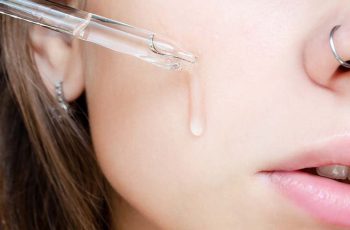
Cucumber Extract in Skin Care
Cucumber
Cucumber extract from the (Cucumis sativus) is a very common ingredient in skin care products like acne cleansers, anti-aging moisturizers, and dark spot treatments.
It has broad benefits for a number of skin concerns, but is most commonly recommended to treat conditions like acne or inflammation.
When prepared for skin care, this product is usually odorless and thin, which is slightly unusual for a product in the essential oil category.
When used raw, cucumbers have a much higher water content than cucumber extract and while maintaining the same benefits; this is why people commonly put cucumber slices on their eyelids.
If you’re thinking about using cucumber extract in skin care, read below and take our quiz to find your Baumann Skin Type so you can find the right regimen for your skin!
What is cucumber extract?
Cucumber extract is the fruit of the cucumber plant blended, steamed, and distilled to remove most of the water content.
What is left is a thin, usually odorless liquid full of many antioxidant, anti-inflammatory, and antimicrobial compounds.
Because it is a thin, plant based oil with very low fatty acid content, it is considered an essential oil.
Even though it contains some unsaturated fatty acids, it is not considered a dry oil because it does not have enough fat to solidify at all in room temperature.
This liquid is alkaline, meaning it is basic (opposite of acidic, not “standard”).
It is a safe and common ingredient that has been used for centuries for various dietary and medicinal purposes. (1)
What is cucumber extract?
What are the active compounds?
Cucumbers are an extremely diverse organism in terms of chemical composition. They contain water, flavonoids, lignans, vitamins, some fatty acids, and minerals of many kinds.
To begin with, cucumbers are a great source of vitamin B, vitamin C, and vitamin E, and vitamin K. (4,5)
Triterpenes present in cucumber extract have been studied to aid in healing wounds. (6)
Flavonoids such as apigenin, luteolin, quercetin, and many other antioxidant compounds such as beta carotene are also present in cucumbers.
There is a very high amount of potassium in cucumbers, as a result, cucumbers are alkaline (high pH).
Even though the general pH within a cucumber is alkaline, it also contains the alpha hydroxy acids lactic and glycolic acid, as well as the beta hydroxy acid salicylic acid. (8)
The alkalinity of cucumber provides its antimicrobial effect.
Lastly for the sake of this blog, there is a small concentration of linoleic and oleic fatty acids. (9)
Linoleic fatty acid is good for moisturizing and repairing the skin barrier.
Oleic acid is used for aiding ingredient absorption.
Many other compounds are present in cucumbers, and many of them are also antioxidant, anti-inflammatory, and antimicrobial.
Benefits of cucumber extract in skin care
Benefits
The numerous phytochemicals (plant specific compounds) present in cucumber extract offer antioxidant, anti-inflammatory, and antimicrobial benefits.
Cucumber extract has notable abilities to scavenge and eliminate free radicals in the skin. (7)
Studies have also found that cucumber extract can reduce the production of sebum in the skin, making it a good choice for oily skin types.
Many of the soothing properties of cucumber oil make it a popular choice for burn ointments.
Studies have found some evidence that cucumber extract might have tyrosinase inhibiting effects as well, though it is not very potent at lightening skin. (3)
The triterpenes in cucumber extract are known for their ability to assist in wound healing. (6)
Overall, the benefits of this ingredient are wide in variety, although it is seemingly a jack of all trades, yet master of none.
In general, there are very few reasons to avoid cucumber in your skin care.
It can function as a respectable antimicrobial, antioxidant additive to a plethora of product types.
Side-effects
Since cucumbers are alkaline, overuse of them on your skin can disrupt the natural slight acidic pH environment of your skin. Additionally:
It can interfere with the effectiveness of your low pH cleansers.
If your skin becomes too alkaline, it can feel sensitive and enflamed.
It is very uncommon to have an allergy to cucumbers, but it is not impossible.
As with many other antimicrobial ingredients, extreme overuse can result in some damage to your microbiome.
Is it safe?
Cucumber extract is safe to use as a part of your skin care regimen as long as you do not have an allergy to it.
The EWG rating of cucumber extract is “1”, which means there are no common concerns associated with its use in cosmetics.
The Cosmetic Ingredient Review panel also deems it safe for use in cosmetics.
To make sure that cucumber extract is right for your Baumann Skin Type, take our quiz for your very own custom skin care regimen!
Take the Quiz
What is cucumber extract used for?
Uses
Cucumber has many potential benefits in skin care, so it can be found as an additive in many product types such as:
Acne cleansers
Hyperpigmentation treatments
Inflammation and soothing creams
Burn treatment creams and serums
Wrinkle treatment products
For acne
Cucumber extract is a good choice for acne treatments because it is antimicrobial, non-comedogenic, and helps with excess sebum on the skin.
Because cucumber extract is alkaline, it creates an environment on the skin that bacteria cannot survive in.
At the same time, the anti-inflammatory compounds in this ingredient alleviate redness on clogged pores.
Studies have shown that cucumber can temporarily interfere with sebum production on the skin, which lowers the chances of future acne breakouts. (1)
For dry skin
Many products designed for dry skin types contain cucumber extract for its anti-inflammatory properties.
Cucumbers are mostly made of water which makes them effective at hydrating certain thin parts of the skin like the eyelids.
Cucumber extract does not strip any oil from the skin when used alongside fatty oils like jojoba or safflower oils.
If you are looking for the best dry skin treatments for your particular skin type, check out this article all about the best dry skin care regimens!
For hyperpigmentation
Cucumber extract contains hydroxy acids which are associated with skin lightening treatments, however these acids are too weak in the alkaline environment to trigger any significant exfoliation.
Instead, cucumber extract expresses tyrosinase inhibiting activity, meaning it directly interferes with the production of melanin.
It is a very weak skin lightener, so it will not make a significant difference to dark spots on its own.
If you’d like to use cucumber extract as a part of your hyperpigmentation treatments, we recommend using it alongside a more potent skin lightening ingredient.
For wrinkles
Cucumber extract has a notable amount of antioxidant compounds which are effective at binding and eliminating aging-related free radicals on the skin.
In addition, it has been used in treatments of sunburns, which could otherwise cause genetic damage to skin that leads to aging. (3)
Supplemental as cucumber extract might be to an anti-aging skin care regimen, it won’t fix wrinkles on its own.
For significant results you should always use anti-aging ingredients in combinations.
Some generally common and effective anti-aging ingredients in skin care are:
Coenzyme Q10
Hyaluronic acid
Resveratrol
Cucumber extract for wrinkles
Difference between cucumber extract and cucumber seed oil
Cucumber seed oil is pressed specifically from the seeds, not the fruit, of the cucumber.
This oil is richer in moisturizing fatty acids than cucumber extract is, and has a slightly thicker consistency.
Though uncommon in skin care, it might serve in certain moisturizing or cleansing products due to its concentrations of linoleic and oleic acids.
It is not as efficient to separate the seeds of the cucumber for processing, so the entire fruit is usually used to make extracts in skin care.
Products
Cucumbers are a jack of all trades in skin care, good for most skin concerns, but not particularly effective at anything by itself.
If you are looking to include cucumber extract in your skin care routine, make sure you aren’t using ingredients with low pH alongside it, because they will neutralize each other and be less effective.
Keep how you should layer your skin care ingredients in mind.


